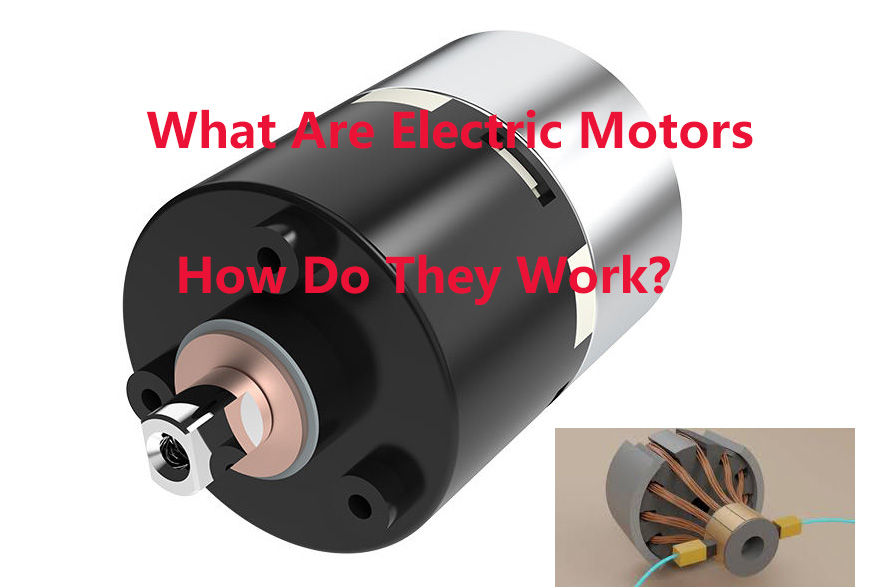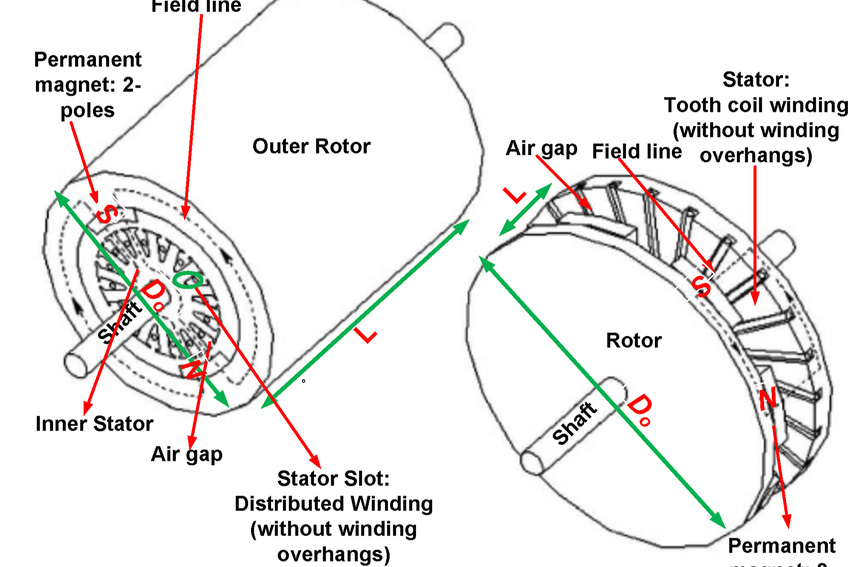Samarium Cobalt Magnet Motor vs. Neodymium Magnet Motor: A Comparative Analysis
Introduction
The world of electric motors and generators has been significantly transformed by the advent of high-performance permanent magnets. Among these magnets, two stand out as leaders in the field: samarium cobalt (SmCo) and neodymium iron boron (NdFeB). They each offer unique properties that make them ideal for various applications. In this article, we will conduct a comparative analysis of SmCo magnet motors and neodymium magnet motors, exploring their strengths, weaknesses, and the industries they serve.
 [1]
[1]
Figure 1. Permanent Magnet Motors
Samarium Cobalt Magnet Motors
Samarium cobalt magnets, often referred to as SmCo magnets, have been around since the early 1970s. They are known for their exceptional magnetic stability, high coercivity, and resistance to demagnetization, even at elevated temperatures. These properties make SmCo magnets a top choice for certain applications, such as aerospace, where reliability and performance under extreme conditions are paramount.
Advantages of SmCo Magnet Motors:
- High-Temperature Performance: SmCo magnets can operate at significantly higher temperatures than neodymium magnets without significant loss of magnetic properties. This characteristic is essential in applications exposed to extreme heat, like aircraft engines and industrial ovens.
- Corrosion Resistance: SmCo magnets are highly resistant to corrosion and do not require protective coatings, making them suitable for applications in harsh environments, including underwater devices.
- Excellent Thermal Stability: SmCo magnets maintain their magnetic strength over a wide temperature range, which is crucial in applications where temperature fluctuations are frequent.
Disadvantages of SmCo Magnet Motors:
- Lower Magnetic Energy Product: Yet, SmCo magnets generally have a lower magnetic energy product (BHmax) compared to neodymium magnets. This means they may not deliver the same level of magnetic performance in terms of magnetic field strength.
- Higher Cost: Also, SmCo magnet motors are more expensive to produce than neodymium magnet motors due to their composition and manufacturing process.
Applications of SmCo Magnet Motors:
SmCo magnet motors are the go-to choice for a variety of applications demanding reliability, durability, and performance in challenging environments.
- Aerospace and aviation, where high-temperature stability is critical.
- Medical devices like MRI machines.
- Oceanography equipment for its corrosion resistance.
- High-performance audio equipment and headphones.
Neodymium Magnet Motors
Neodymium iron boron magnets, or NdFeB magnets, are the most widely used rare-earth magnets today. They were developed in the 1980s and quickly gained popularity due to their outstanding magnetic properties, including high energy density and magnetic strength. These magnets are commonly found in a wide range of consumer and industrial applications.
Advantages of Neodymium Magnet Motors:
- Exceptional Magnetic Strength: Neodymium magnet motors have the highest magnetic energy product of any permanent magnet material, providing superior magnetic performance.
- Cost-Effectiveness: Neodymium magnet motors are more cost-effective to manufacture than SmCo magnet motors, making them a preferred choice for a variety of applications.
- Versatility: Neodymium magnets are highly versatile and can be customized for specific applications by adjusting their composition and magnetization direction.
Disadvantages of Neodymium Magnet Motors:
Nevertheless, neodymium magnets are sensitive to temperature and can experience reduced magnetic performance at high temperatures. They are also more prone to corrosion and require protective coatings in certain environments.
Applications of Neodymium Magnet Motors:
Neodymium magnet motors have found extensive applications in various industries due to their exceptional magnetic properties. Some key applications include:
- Electric vehicle motors for their high torque and efficiency.
- Wind turbines generate renewable energy efficiently.
- Electric generators in power plants.
- Consumer electronics such as headphones, speakers, and hard drives.
Related reading: What Motors can be Used for NdFeB Magnets?
Comparison Table
Here is a table comparing SmCo Magnet Motors and Neodymium Magnet Motors.
| Features | Samarium Cobalt Magnet Motors | Neodymium Magnet Motors |
| Magnetic Properties | Exceptional stability | Exceptional strength |
| Temperature Resistance | High-temperature performance | Sensitive to heat |
| Corrosion Resistance | Highly corrosion-resistant | Requires coatings |
| Cost | More expensive | Cost-effective |
| Customization | Limited customization | Versatile and customizable |
| Key Advantages |
High-temperature performance Excellent thermal stability |
Superior magnetic strength Cost-effective |
| Key Disadvantages |
Lower magnetic energy product Higher cost |
Sensitive to high temps Prone to corrosion |
| Applications |
Aerospace, medical devices, oceanography equipment, High-performance audio equipment |
Electric vehicles, wind turbines, generators Consumer electronics |
Conclusion
When deciding between SmCo magnet motors and neodymium magnet motors, it's crucial to consider the specific requirements of your application. SmCo magnets excel in high-temperature and corrosive environments, making them ideal for aerospace and certain medical and industrial applications. In contrast, neodymium magnets offer exceptional magnetic strength and cost-effectiveness, making them suitable for a broader range of applications, from consumer electronics to renewable energy systems. Both magnet types have their strengths and weaknesses. For more information, please check our homepage.
Reference:
[1] Zhao, X.; Kou, B.; Huang, C.; Zhang, L. Optimization Design and Performance Analysis of a Reverse-Salient Permanent Magnet Synchronous Motor. Machines 2022, 10, 204. https://doi.org/10.3390/machines10030204















